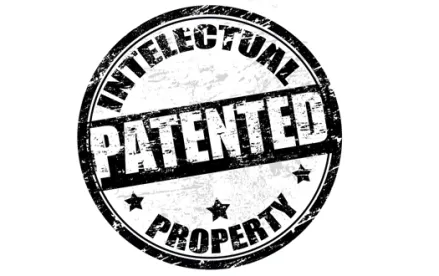In two recent decisions addressing the issue of willful infringement, the US Court of Appeals for the Federal Circuit recalled its mandate, vacated portions of earlier decisions and remanded to the district court the substantive application of the Supreme Court of the United States’ recent decision in Halo Electronics v. Pulse Electronics. The Federal Circuit decided Stryker Corp. v. Zimmer, Case No. 13-1668 (Fed. Cir., Sept. 12, 2016) (Prost, CJ) by reinstating the jury’s verdict that Zimmer’s infringement was willful, and remanding to the district court the issues of enhanced damages under § 284 and attorneys’ fees for an exceptional case under § 285. Likewise, in WesternGeco L.L.C. v. Ion Geophysical Corp., Case Nos. 13-1527; 14-1121; -1526; -1528 (Fed. Cir., Sept. 21, 2016) (Dyk, J), the Federal Circuit vacated its earlier enhanced damages analysis and remanded to the district court with instructions to revisit whether the infringement was willful and whether enhanced damages are warranted.
Stryker v. Zimmer
The parties are the two main competitors in the orthopedic pulsed lavage device market. Previously the Federal Circuit affirmed the district court’s claim constructions and its summary judgment ruling that Zimmer infringed two of the asserted patents. The Federal Circuit also affirmed the jury’s determination that a third patent was infringed and that the three asserted Zimmer patents were valid. The jury had awarded lost damages in an amount of $70 million, and the district court thereafter trebled damages and found the case exceptional. In the earlier appeal, the Federal Circuit reversed the finding of willful infringement, with the decision eventually making its way to the Supreme Court in tandem with Halo v. Pulse Electronics for review of the Seagate framework for willful infringement.
Following the Supreme Court’s determination that the Federal Circuit’s two-part analysis for willful infringement “unduly confines the ability of district courts to exercise the discretion conferred on them,” the appeal returned to the Federal Circuit. The Federal Circuit affirmed the jury’s finding that the infringement was indeed willful but vacated and remanded the district court’s decision to treble damages for willful infringement and award attorneys’ fees. Although the district court had already made a discretionary determination to award the maximum amount of enhanced damages and to deem the case exceptional, the Federal Circuit stated that the “best course” was to vacate and remand in order for the district court to assess all of the circumstances in the case. And, for the finding of an exceptional case, the Federal Circuit pointed to “further allegations of litigation misconduct in this case” as well as the intervening decision in Octane Fitness v. ICON Health & Fitness as justification for further consideration by the district court.
WesternGeco v. Ion Geophysical
The underlying patent infringement suit covered four patents for technologies used to search for oil and gas beneath the ocean floor. The jury found all asserted patents infringed, not invalid, and awarded WesternGeco $93 million in lost profits and reasonable royalty damages of $12 million. After trial, the district court set aside the jury’s willful infringement findings because the district court concluded that ION’s defenses were reasonable and not objectively baseless. The Federal Circuit affirmed that decision under Seagate, but the Supreme Court later granted certiorari, vacated and remanded the determination of no willful infringement in light of Halo.
The Federal Circuit took the same approach as in Stryker v. Zimmer, reinstating its earlier opinion but amending the section of the opinion addressing willful infringement. Again, the Federal Circuit vacated for the district court to apply Halo in the first instance (i.e., decide whether the infringement was subjectively willful) and, if so, to exercise its discretion in deciding whether to award enhanced damages. Notably, for the first time since Halo, the decision states that the objective reasonableness of the accused infringer’s position remains relevant for the district court to consider when deciding what enhanced damages, if any, are appropriate. The decision posits that Halo adopted language from Octane Fitness regarding the lack of a precise formula in weighing the totality of the circumstances, and that Octane Fitness referred back to a list of nonexclusive factors in the 1994 Supreme Court decision in Fogerty v. Fantasy, Inc. (a copyright decision addressing the fees for an exceptional case). Accordingly, the Federal Circuit concluded that objective reasonableness (both in the factual and legal components of the case), frivolousness, motivation, and the need in particular circumstances to advance considerations of compensation and deterrence were all factors that a district court should consider when assessing whether to enhance damages.
The instructions to the district court preserve a bifurcated approach to enhancement of damages. First, a district court should make a predicate determination (guided by Halo) assessing subjective willfulness. Second, the district court must make a discretionary determination of whether and how much to enhance damages if the infringement is determined to be willful.
Practice Note: In both of these cases, the Federal Circuit prioritized district courts having an opportunity to apply Halo before substantively reviewing the discretionary ruling. Yet in giving district courts that opportunity, the Federal Circuit clarified that district courts should not depart from the two-step process of first deciding whether the defendant has engaged in conduct that should be deterred under Halo and only then deciding how much an award should be enhanced under the nine factors identified in Read Corp. v. Portec (Fed. Cir., 1992). In taking this approach, the Federal Circuit leaves open the possibility that infringement could be willful but a patentee would not receive any enhanced damages. Indeed, the burden will remain with patent holders to put forward evidence establishing that the infringement is willful and to then put forward evidence and argument to support an enhanced damages award in view of the Read factors.



 />i
/>i

